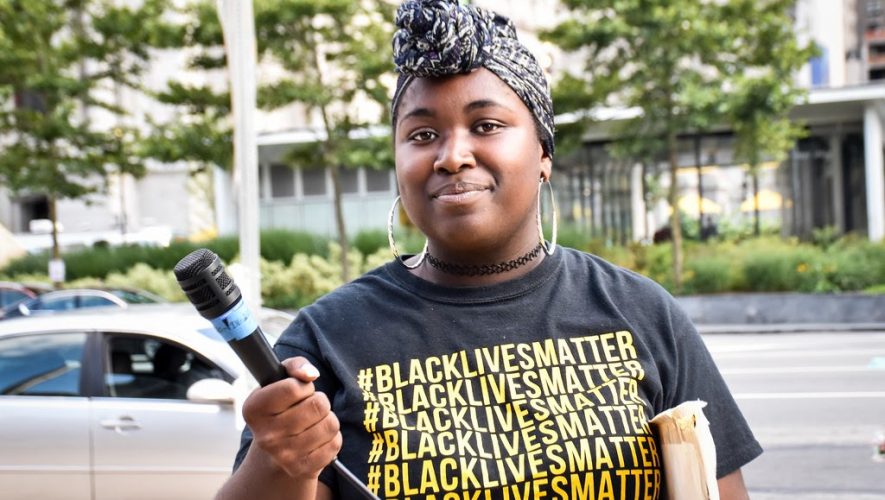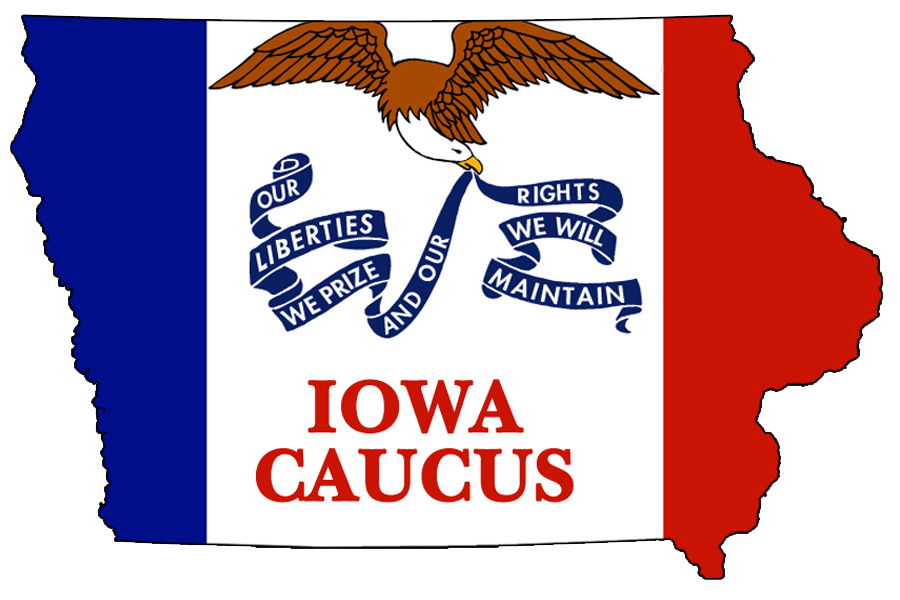Photo by Joe Piette
Objectivity doesn’t mean what most people think it does. Its original definition, popularized by Walter Lippmann, explained how neutrality applies to journalism the same way the scientific method does to science: a collection of evidence that leads to a deductive conclusion.
Today, objectivity is synonymous with “fairness” and “balance.” It’s unattainable and ostracizes journalists who fail to water down their conclusions to satisfy audiences. There will never be a perfectly objective journalist because objectivity itself is skewed to support individual beliefs.
When the public doesn’t perceive journalists as fair and balanced, it villainizes them. A 2020 Gallup survey indicated that more than a third of Americans had no trust for the mass media. To restore this relationship and regain the trust of their audience, journalists need to stop chasing after an ideal and progress toward transparency.
At the end of the nineteenth century, journalists practiced “realism,” or collecting and ordering information and facts to reveal the truth. Then, at the turn of the century, journalists noticed how realism could support propaganda tactics by choosing what information and narrative to report. Walter Lippmann keyed a shift of journalism into a practice of evidence and verification. Objectivity required journalists to develop a consistent method of analyzing information to ensure that personal and cultural bias would not sully their work.
The objectivity standard gradually morphed into the one we have today. Some news organizations that advertise themselves as fair and balanced take advantage of the new objectivity, selecting and including information that supports their viewpoint. It is not only confirmation bias, but also deceitful to those in their audience who believe these organizations operate without bias.
The original definition of objectivity acknowledged that journalists could be biased as long as they followed the scientific method of deduction. The difference is how these “fair and balanced” organizations singularly seek out evidence and sources that confirm their beliefs, rather than looking at the story holistically and pursuing all relevant sources. Many audiences don’t know any better and will fully buy into this form of reporting as “the truth.” In reality, it’s just one truth from one perspective of a complex story. Journalists and media companies must recognize their own biases and accept how that affects their storytelling.
Before the rise of new objectivity in the 1960s, there was essentially no analysis or decoding of information, as it might have allowed journalists to insert their opinions inadvertently. This regurgitation of facts reinforced the opinions of White, straight, elite men. In the 1930s and 1940s, journalists would collect information from certain people—often powerful, upper-class men—to make it accessible to their audiences. The rise of McCarthyism in the 1950s can also be attributed to such echoing of privileged figureheads and the stigmatizing of critiques against them. Senator Joseph McCarthy blacklisted government employees, union workers, and Hollywood actors suspected of being communist sympathizers.
In the 1970s, political censorship like McCarthyism evolved to affect journalists covering the conflict in Northern Ireland. The British government censored facts by preventing journalists from accessing certain sources. For example, if reporters interviewed members of the Irish Republican Army, the British government assumed they supported the IRA and arrested them.
Historically, objectivity allowed the opinions of the powerful, like McCarthy and the British government, while suppressing doubts or critical thinking. To correct this bias toward the privileged and upper class, news organizations began to encourage “professional judgments,” which separated informed conclusions from personal opinions. Still, if audiences disliked what professionals were saying, they cried “bias” and argued such professional judgments were elitist or misinformed.
Objectivity is no longer a sustainable standard. It benefits not only the wealthy but also White people. The perspective and proclivity of Whiteness shape the standards of objectivity. When reporters of color challenge these conventions, the journalism industry can withhold opportunities or chastise journalists.
The solution to the slanted foundation of objectivity is to get to the hard truth and stop using elaborate euphemisms that look unbiased, whether the audience likes it or not. Rather than say “19-Year-Old Killed in Boston Officer-Involved Shooting,” we’re better off saying, “Boston Police Shoot 19-Year-Old.” The former is objective but unclear and weakly written to avoid villainizing the police. The latter is accurate and truthful, even if it means upsetting pro-police audiences.
Bias in and of itself is not the problem. The problem is relying on objectivity and ignoring its inherent flaws.
The current standard of objectivity directly undermines efforts to diversify news and reporting. When Black journalists use their own experiences to enrich their reporting, especially regarding police brutality, they are barred from reporting for bias. Black journalists should be praised for their honesty when inserting their bias in a story about police brutality against Black people. When what we believe to be biased can actually be educational, we shouldn’t judge biased journalism. We must reassess why we believe objectivity is the only good method.
Objectivity within the context of a nationalistic country—one where the president made an “America First” speech at his inauguration—seems neutral to that country. Just because a statement agrees with many people does not make it the truth. If modern objectivity implies that nationalism is normal, then modern objectivity is biased.
For example, during the Afghan war, CNN chairman Walter Isaacson sent out a memo asking for objective reporting from his reporters. He specifically asked them to balance coverage of US violence on Afghan soil with recollections about 9/11. He might as well have printed, “America is bombing Afghanistan, but it’s fine because we need to find the terrorists who attacked us first.” That’s not objectivity. That’s his justification.
Not all stories can be divided into two opposing political sides. Journalists can use objectivity as an excuse to write a story addressing “both sides” without considering narrative depth.
The industry’s faith in objectivity keeps the door open between powerful figures and the media. When journalists stop feigning objectivity and argue with the president or corporate CEOs, they risk losing access to conversations and press rooms. Take President Trump, who banned the BBC, CNN, and The Guardian from a press briefing after he called the press the “enemy of the people.”
Objectivity is failing, and journalism should take a new direction toward honesty. On June 4, Buffalo police officers shoved seventy-five-year-old Martin Gugino— who was caught between officers and protesters at a Black Lives Matter march following George Floyd’s death—to the ground. He began to bleed from his ear and suffered a brain injury.
“Buffalo officers suspended in shoving of 75-year-old man” is the headline from The Washington Times, a popular conservative newspaper. Here is the article’s lede:
“Dozens of Buffalo police officers stepped down from the department’s crowd control unit Friday, objecting to the suspensions of two fellow officers in the shoving of a 75-year-old protester who fell and cracked his head.”
The article briefly addresses the incident and mostly discusses how the police officers who pushed Gugino will be suspended. In describing the events, the article carefully avoids blaming the officers. The police did not shove Gugino; rather, the police were involved in the shoving of Gugino.
In contrast, the left-leaning New York Times’ headline reads: “Buffalo Police Officers Suspended After Shoving 75-Year-Old Protester.” The article’s lede:
“Prosecutors are investigating the actions of two Buffalo police officers who were suspended without pay on Thursday night after a video showed them shoving a 75-year-old protester, who was hospitalized with a head injury.”
The Times describes the incident in more depth, even citing the video footage’s source. It reports that, in the video, an officer yelled, “push him back.” After Gugino is on the floor, the article describes how police officers noticed him bleeding and marched past without checking on him.
It is not like the two articles paint inverted pictures of the same story. The only real difference is that they are told with different levels of detail. The Washington Times avoids mentioning Gugino’s health after the assault and keeps the story brief. The New York Times paints a vivid picture, even conducting direct interviews with witnesses. Neither is objective, but the latter provides more detail, and a more detailed story is always better.
The Washington Times refrains from providing details because the story does not support its conservative narrative. It tells the story, but just enough to say that it did. Its bias would be clear only to a reader who sought additional coverage.
The New York Times’ bias is clear within the piece. It is evident the paper has spent time dispatching reporters to the scene to get first-hand interviews about the event. It seeks to frame the story, likely choosing sources that confirm its bias. And because its audience will pay to read stories about the Black Lives Matter protests, the New York Times is more willing to invest resources into covering them. Their bias contributes to the depth of the story.
Transparency is not the opposite of objectivity. It is its progression. Everyone has bias, whether conscious or subconscious. Rather than continue to pretend journalists are without personal beliefs, we should insist they own up to those beliefs. Journalists need to be clear about their reporting, how it relates to their beliefs, where they receive information, and why they chose those sources.
No amount of time will allow media companies and audiences to create the perfect sense of objectivity. Instead, objectivity needs to be put aside for a more practical and transparent approach. The goal of transparency is to rebuild credibility and trust between news sources and the audience to calm fake news hysteria. Transparency does not excuse “alternative facts.” Transparent stories rely on facts.
NPR is well known for its efforts toward transparency in their ethics handbook, which explains the process of an interview—how reporters obtained it, when it occurred, and how the information is edited. It also includes strict rules about bylines, providing credit, and honoring anonymous sources. NPR implements transparency properly by applying one standard to all of its content and explaining this standard clearly to readers. Transparency requires a lot of additional explanation and work, but this work should have been part of journalistic standards in the first place.
The evolution of big tech redefines the conversation of free speech. About 43 percent of adults say they often get their news from social media and online news sites. Audiences implicitly trust a handful of tech moguls in Silicon Valley, rather than journalists, to control the content on their feeds. Companies like Facebook and Google capitalize on public distrust in the media by controlling and censoring content. By restoring trust between journalists and audiences, transparency can combat big tech censorship.
Journalism’s job is not to cater to individual people. It is to tell truths, especially those that are hard for audiences to swallow. Transparency holds space for diverse storytelling, enriched by experiences of oppression. Transparency can help rebuild media credibility. When met with doubt and uncertainty from audiences, journalism needs to meet them halfway with candid honesty and transparency, not objectivity.



